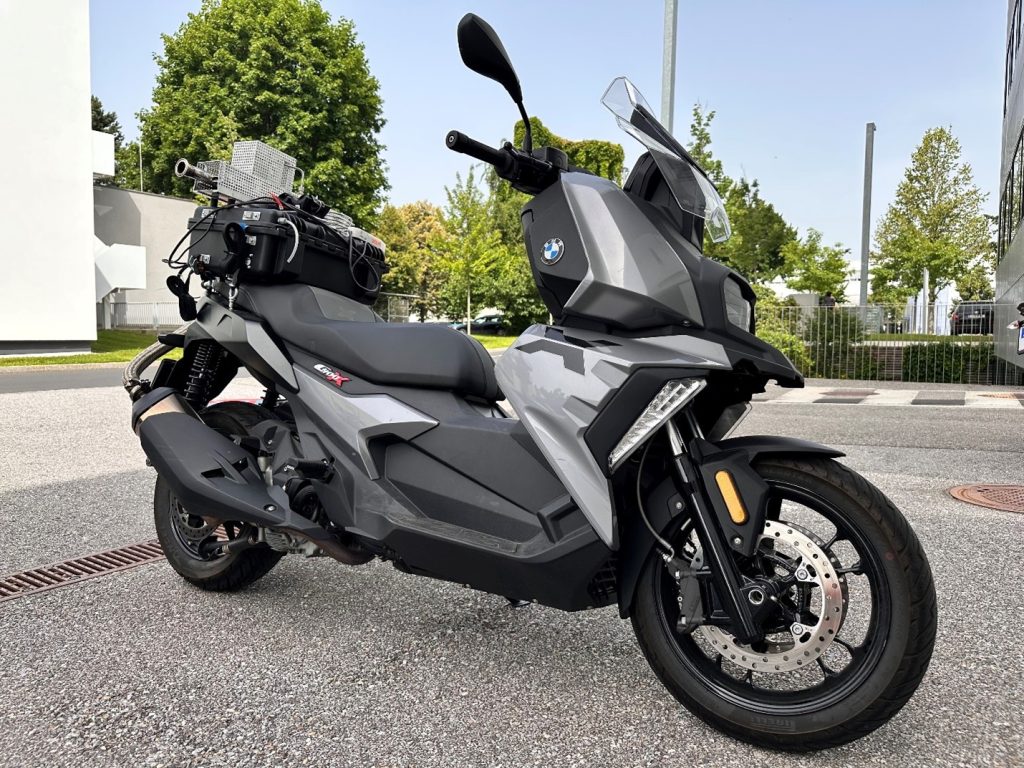Emissions of L-vehicles can be tested in different environments and testing protocols, such as typical type approval lab testing on a chassis dynometer, roadside measurements and other emission tests under laboratory conditions. All methods have been applied in various ways in our LENS project. Nevertheless, one element has not been highlighted, which are real drive emission (RDE) tests, which assess various exhaust gases, including NOx, CO, CO2, particulate matter and other emissions in real world driving scenarios.
In order to measure a wide range of pollutants in real driving conditions, the entire measurement equipment used in lab testing must literally be carried on the motorcycle. LENS pursues two approaches to this. The PEMS (portable emission measurement system), which was developed for the RDE testing of passenger cars and has been adapted for the use on motorcycles, and SEMS (smart emission measurement sensors), which are currently being developed.
PEMS and SEMS – what is the difference and why does LENS use two systems?
Whereas both measurement solutions have their own use cases, and are explained in more detail below, one difference is the size of the measurement unit. Whereas the smart sensor (SEMS) is a small and lightweight equipment designed for measurement of selected emission components, the portable emission measurement system (PEMS) is a larger solution developed for the measurement of all relevant emission components. Even though the PEMS includes “portable” in its name, it still weights 50kg. Since attaching such a large piece of equipment on the smaller types of L-vehicles could increase the load and impact the vehicle performance significantly, the smaller and lighter SEMS is a specially tailored equipment for smaller L-vehicles where the use of full size PEMS is not applicable.
How do these pieces of equipment look like?
The two images below should explain the difference quite precisely. The first picture shows a BMW C400X Scooter equipped with a lightweight SEMS and an exhaust flow meter, which was developed by our project partner HORIBA.
On the second picture you can see a lightweight commercial PEMS from AIP mounted on a BMW R1250RS. This popular and light version of a PEMS often used for RDE testing of motorcycles. Thus, you can clearly identify that the smaller solution on the first photo is more practical for very small L-vehicles, although not all relevant emission components with this solution.


Why are these two solutions relevant for LENS?
We are currently investigating the applicability and the accuracy for different vehicle and engine types of both systems. Papers will be published on this year’s ETH Nanoparticle Conference in Zurich as well as the SAE SETC in Bangkok for the PEMS system, as the SEMS is still in development and some adjustments have to be done. As mentioned before, the development of such a lighter SEMS in the framework of the LENS project should have lower impact on the driving dynamics of small LVs compared to full functional PEMS systems (50kg+).

